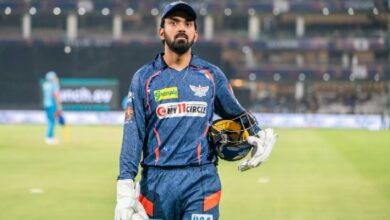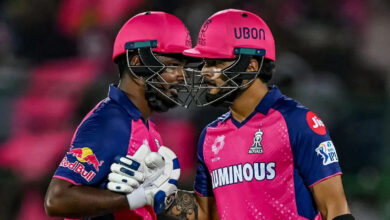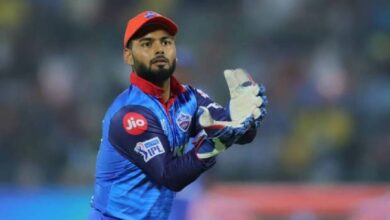Why the WTC final is make or break, again, for Ajinkya Rahane

Of late, Ajinkya Rahane has been riding a sympathy wave, especially after his self-liberating IPL stint. Of a ‘team-man’, who has suffered agonising stabs in silence. Rahane might be harshly perceived as possessing a personality of a mumbler in a loud bazaar but when he is in full batting flow, he can rival even Rohit Sharma in the aesthetic and wow factors. His raw talent suggested his Test career should have perched him alongside Virat Kohli, Joe Root and Kane Williamson, and more than those three, his batsmanship can make one gasp in respect and delight. But sport doesn’t quite play out that way.
That mumbler facet has cruelly interrupted his career several times. When Kohli was injecting insecurity as a performance-enhancing drug in his early years of captaincy, often shuffling his players for horses-for-courses theory or in effort to send messages or just trying to drag his team forward in his way, Rahane was one of the most affected.
Not many could understand dropping him in South Africa in the 2018 series; and not many understood the effect it had on him. He mumbled on, shouldered on but couldn’t really assert himself. Cheteshwar Pujara has been equally, perhaps even more, pushed to the corner with strike-rate talks, but he is made of a different mould. Not many are as mentally strong as him.
Intent, value system
Yet, every time Rahane got some free space, he would burst through like a creative midfielder suddenly realising he can score instead of passing. Like when he was the captain, the mumbler was now perceived as calm, composed and icy-steel. The word from even Delhi Capitals when he was with them, and not in the playing XI, was one of awe and respect: how he kept the team’s morale ahead of his own self, and would sync himself into the background as one of the boys. There is no questioning his intent and value systems.
Invariably, as ever, his fate would be decided his batting. For all the external pressures, the onus was on him to consently silence it with his batting, like Pujara, but he couldn’t be as consent.
He has had his problems against quality spin; often getting into a tangle, contorting himself into weird spaces. But overseas, especially, his batting in the recent years has been a mixture of delight and a tinge of disappointment. A flurry of raspy hits, especially through the offside when his hands just cascade— not many, if any, have quicker bat-speeds—would be followed with a tame stab to slips or backward point.
He is a batsman who likes to feel the ball on bat, as they say. It’s his strength and weakness, though he can, when he puts his mind to it, dig up wonders. Like in the Nottingham Test in 2018 against England when he shelved out the drives that he was nicking to slips; he almost shut shop with that shot for a while. It doesn’t come naturally to him; it’s one thing for Sachin Tendulkar to put away the cover drive in Sydney; he was a batsman in total command over his craft and mind. And he has shots around the park. It would not have been easy for Rahane to do away with his very productive shot.
What comes naturally to him is what he finally showed this IPL. It has been said that defence is about structure and attacks are anti-structure that allows for creative self-expression to tap in the traits of players. One can argue it otherwise as well if one were to nitpick, but the essence of that argument is understandable, especially with Rahane.
He does defend well, though the television statics show that he generally anaesthetises the ball from the pacers on his front-foot, it’s such a short step forward that it’s more an illusion of a forward defence than the real thing. Invariably, it does seem as if he is playing from the crease, itself. And he gets into the stabbed-catches or the lbw scenarios. In the past, when he used to work with Pravin Amre, they would often try the drill of using the small-sized bat to get him leaning into the front foot drives. If one doesn’t quite lean into, the ball would squeeze under the mini-bat. His on-the-up punches and his cover drives, when he chooses to lean into them, have retained that oomph despite the years. He has also improved his game against spin, and handled himself well against Rangana Herath in Sri Lanka, though the real troubles start when the fizz off the pitch levels up.
Straight bat-swing
The fast hands (and eye), and that lovely straight downward bat-swing are the standout features of his batting. That bat-lift is almost Tendulkar-ish in its straightness. Virender Sehwag was the first Indian batsman other than Tendulkar with that straight back-lift but his was more of a wry affair and had this remarkable fluency about it. Tendulkar’s was more arms as compared to Sehwag. Rahane isn’t pure Tendulkar of course but his back-lift and the punch comes pretty close to that of the legend. Perhaps, the hand-speed is more, but Tendulkar’s had more control and was more precise.
Years ago, during the 2015 World Cup, MS Dhoni had highlighted two Rahane traits that set him apart. “The strength in his (Rahane’s) batting is the gift of timing and his ability to exploit gaps in the field.” Both are repeatedly seen to the day; the timing one can understand, but the gap-identifying instinct remains startlingly top notch. Sourav Ganguly had it; Rahul Dravid didn’t (to that extent), for example.
Luckily, this year, he has aligned himself with his batting core. A couple of days back he averred that he is going to bat as freely as he did in IPL.
That brings us to the most complicated thing about Rahane’s batting. It’s not as if he had curbed himself, retreated into a shell holding back his shots. It wasn’t curtailing that did him in; in fact it was the opposite, a reckless excess. As it is, in his last phase of Tests, he had become a counterattacking batsman, a trait as it would with Aravinda de Silva seem to flower the most when the team was in trouble. Aravinda, who was called Mad Max in his early years, learnt to control it in his pomp, mixing prudence with aggression, and if Rahane can do it, he still might make his final lap last long. He would get out after a cameo, and talk about how he felt that attacking cameo was the need for the team, forever living up to his team-man tag, but deep inside he should know that it can’t hurt the team if he had stayed on for a longer knock. This is probably a stretch but there seemed a hint of desperation. Probably the wrong word, but the absence of serenity was felt.
Crisis cameo man
Then everything would sync up admirably when the team was in trouble, or the pressure was off him (as in it would have been understandable had he failed with expectations dipping), he would unfurl a beauty. In some ways, which is what he has been doing this IPL. Until his name was announced the selectors, he kept crashing the ball around. Not that he failed after his selection, but a combination of factors led to a relatively lesser output.
Watching Rahane at the WTC final could be a rather fascinating experience. One wishes he remains confident, and the team management gives him that mental space, to walk the talk of playing with freedom. But without boiling over. The trouble as ever would come when and if he gets caught up playing from the crease. But if he gets away, he can hurt the Aussies. With Nathan Lyon prowling, batting in the second innings if the pitch does turn out to be dry like old Oval, cannot be easy. He would then have to fire in the first innings.
Undoubtedly, a stark failure at WTC might yet again make Dravid-led management to throw their hope into the younger lot for the future. Not many would moan Rahane fading out. This lone Test is that important for Rahane.







